Arctotis scabra
Arctotis scabra Thunb.
Family: Asteraceae
Common names: large-seed African daisy (Eng.); gousblom (Afr.)
Introduction
The large-seed African daisy, is a fast-growing perennial that produces striking yellow flower heads that bloom all year round.
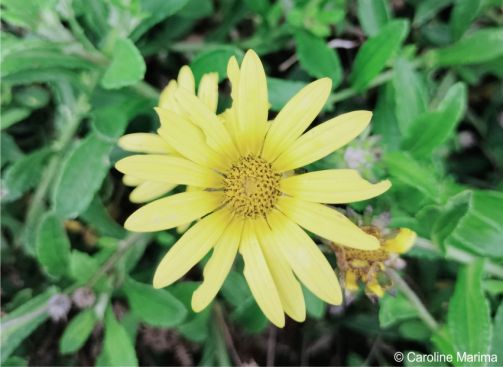
Description
Description
Arctotis scabra it is a robust, hairy, sprawling perennial that can grow up to 400 mm tall. Leaves are oblanceolate to linear, hairy above and white-felted beneath. Flower heads attached on peduncles are solitary, radiate, with a yellow to dark floral disc and yellow petals. Flowering is mainly in spring, summer and autumn (Sep. to Apr.) but flowers may be found at any time of the year.
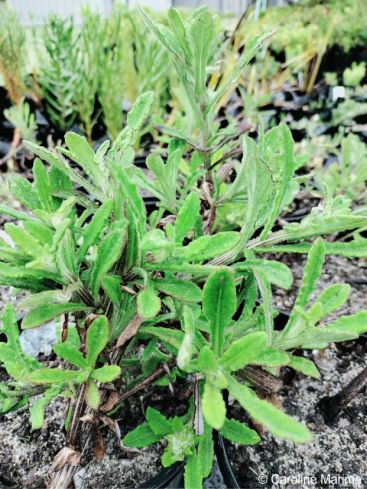
Conservation Status
Status
The current (2023) assessment for the Red List of South African Plants shows that the species is Least Concern (LC) with a fairly stable population occurring in more than 30 subpopulations, and with 581 observations from 2008 to date on the iNaturalist platform, this clearly indicates that Arctotis scabra is not facing any risk of extinction in the near future, however the population trends should be monitored.
In areas along the coast from Pringle Bay to Hermanus, a significant historical threat was once posed by urban expansion and coastal development and expansion of agricultural crops. The biggest threat to any habitat is encroaching alien invasive species that are likely to outcompete native species including this one, so it is important to monitor and eradicate unwanted plants to stabilize the population and minimize threats.
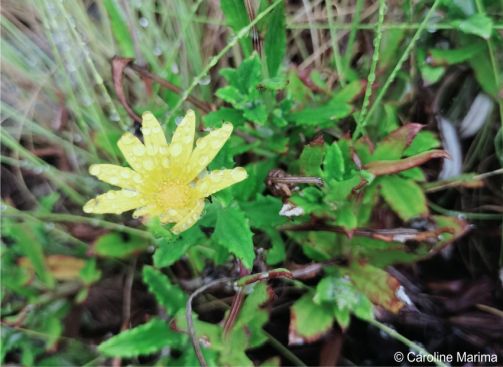
Distribution and habitat
Distribution description
Artotis scabra is endemic to the Western Cape region of South Africa, occurring from the Cederberg to the Kleinriver Mountains. It is found growing among woody shrubs, on sandstone slopes and flats, in Fynbos.
Derivation of name and historical aspects
History
Arctotis scabra has many synonyms and includes many species that were formerly considered distinct, such as Arctotis macrosperma and A. semipapposa. It is part of the genus Arctotis that comprises of more than 60 species within the daisy family, Asteraceae. The genus was named by Linnaeus, the name is a combination of the Greek words arktos, meaning ‘a bear’ and otis, ‘an ear’. The derivation is not clear, it could refer to the pappus scales on the fruit, or the coat of shaggy hairs on the fruit that he thought resembled the ear of a bear. This species was first named by Thunberg, the name scabra meaning ‘rough’, perhaps referring to the roughly hairy stems and leaves of the plant.
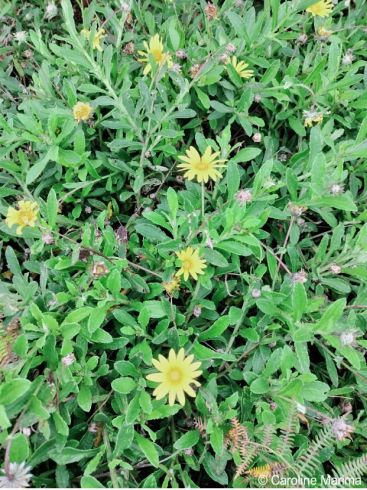
Ecology
Ecology
Pollinators such as butterflies, bees and other flying insects visit the striking flower heads of Arctotis scabra to feed on the pollen and nectar. The flowers only open fully when exposed to full sun and close in cold or rainy weather.
Uses
Use
Species of Arctotis are great plants to incorporate in the garden as they provide different growth forms, are easy to work with and they add interest to flowerbeds by providing colour throughout the year. They are hardy and adaptable, and can withstand most conditions and continue to thrive.
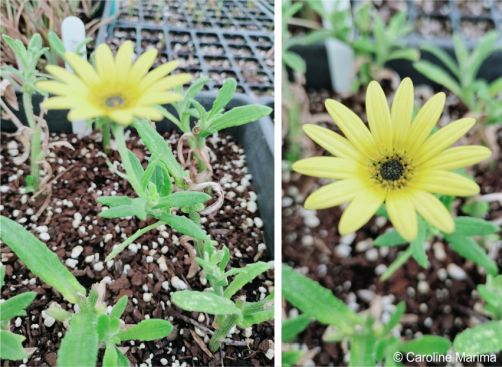
Growing Arctotis scabra
Grow
Arctotis scabra is easy and fast-growing and can be planted in the garden. Grow them in a full sun position, in a rockery or massed in bedding displays. They are also suitable for containers. The plant thrives in sandy soil but can do well in almost any well-drained soil. Prune back directly after flowering to encourage new shoots.
Arctotis scabra can be easily propagated from seeds or cuttings. Seeds are harvested and sown in autumn, and are readily available for planting a month or two after germination.
For cuttings, collect material from healthy plants, treat with rooting hormone and place in a well-drained growing medium, preferably a mixture of fine-milled bark mixed with perlite at a ratio of 1:1. Place them in a controlled environment with mist and bottom heating of ± 24°c. Once rooted, pot them up using fynbos potting mix, which is well-drained and acidic with pH of 5.5-6.7. Harden them off in light shade for a month or two, after which they will be ready to be planted out in the garden.
References
- Fernkloof Nature Reserve. Arctotis scabra. https://www.fernkloof.org.za/index.php/all-plants/plant-families/item/arctotis-semipapposa. Accessed on 2025/06/06
- Helme, N. & Manning, J. 2024. Ericas of the Fynbos. Published by Struik Nature.
- iNaturalist. Largeseed African Daisy (Arctotis scabra). https://www.inaturalist.org/taxa/867538-Arctotis-scabra. Accessed on 2025/06/06.
- Manning, J. & Goldblatt, P. 2012. Plants of the Greater Cape Floristic Region 1: the Core Cape Flora. Strelitzia 29. South African National Biodiversity Institute, Pretoria.
- McKenzie, R.J. 2018. Nomenclatural changes and typifications of Arctotis species (Asteraceae, Arctotideae) from the Western Cape and Eastern Cape provinces of South Africa. Willdenowia 48(1):29-49.
- Mhlongo, N.N. 2023. Arctotis scabra Thunb. National Assessment: Red List of South African Plants. https://redlist.sanbi.org/species.php?species=3195-4009.
- Notten, A. 2008. Arctotis acaulis L. (Asteraceae). PlantZAfrica. Online. https://pza.sanbi.org/arctotis-acaulis.
- Van der Walt, L. 2005. Arctotis stoechadifolia P.J. Bergius (Asteraceae). PlantZAfrica. Online. https://pza.sanbi.org/arctotis-stoechadifolia.
Credits
Caroline Marima
Harold Porter National Botanical Garden
June 2025
Plant Attributes:
Plant Type: Perennial
SA Distribution: Western Cape
Soil type: Sandy
Flowering season: Spring, Early Summer, Late Summer, Autumn, Sporadic/All year
PH: Acid
Flower colour: Yellow
Aspect: Full Sun
Gardening skill: Easy
Special Features:
Horticultural zones








Rate this article
Article well written and informative
Rate this plant
Is this an interesting plant?
Login to add your Comment
Back to topNot registered yet? Click here to register.